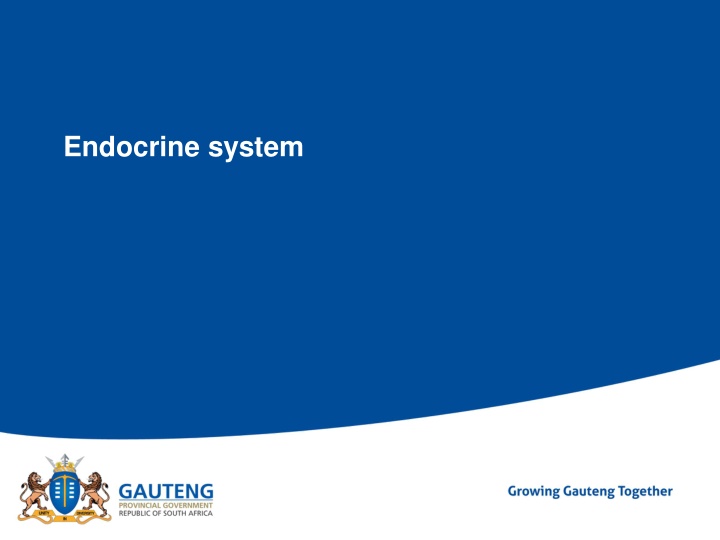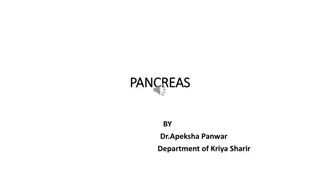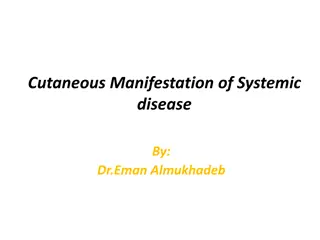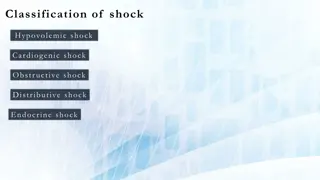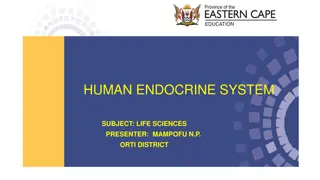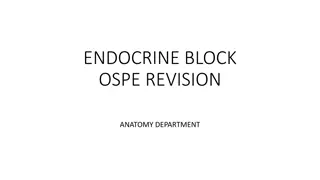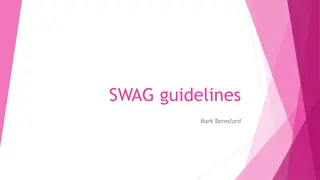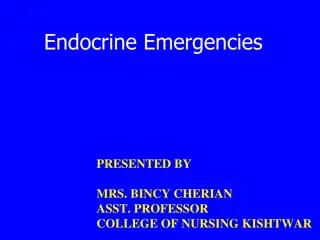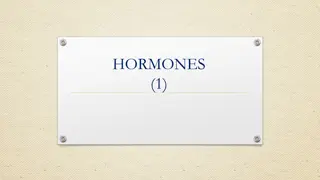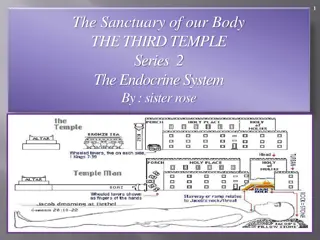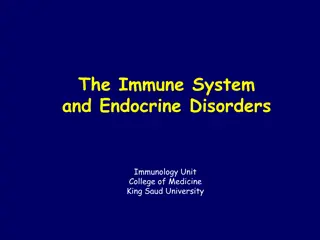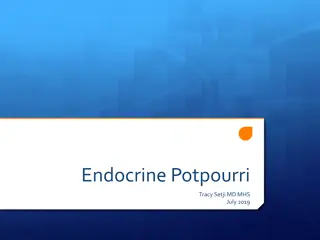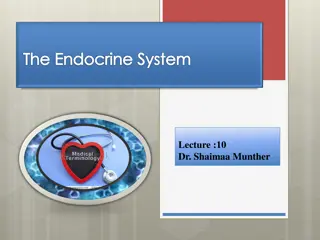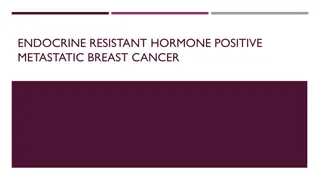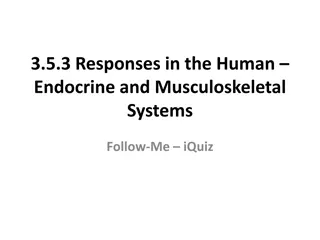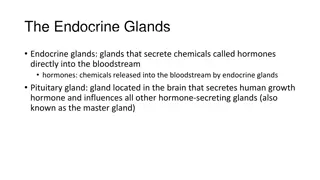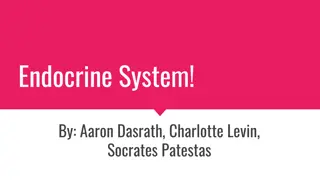Endocrine system
The endocrine system and nervous system work together to control various body activities. While the nervous system coordinates quick responses to external stimuli, the endocrine system regulates slower but long-lasting responses based on internal environments. This comparison highlights the differences between the two systems and provides insights into the functions of the endocrine glands and hormones. Additionally, it explains the importance of homeostasis in maintaining a stable internal environment for optimal body function.
Download Presentation

Please find below an Image/Link to download the presentation.
The content on the website is provided AS IS for your information and personal use only. It may not be sold, licensed, or shared on other websites without obtaining consent from the author.If you encounter any issues during the download, it is possible that the publisher has removed the file from their server.
You are allowed to download the files provided on this website for personal or commercial use, subject to the condition that they are used lawfully. All files are the property of their respective owners.
The content on the website is provided AS IS for your information and personal use only. It may not be sold, licensed, or shared on other websites without obtaining consent from the author.
E N D
Presentation Transcript
The endocrine system vs. nervous system The nervous system and endocrine system controls different types of activities in the body. They are jointly responsible for the functioning of all the different organs and systems, this is known as coordination The nervous system co-ordinates very quick responses to external stimuli The endocrine system controls responses that are not that fast but are long-lasting and reflect the body s internal environments 2
Comparison between Endocrine and nervous system Endocrine system Nervous system 1. Made up of glands 2. Produces hormones 3. Hormones transported by the blood 4. Effects are slower and more general 5. Hormones control long-term changes (e.g. growth) 1. Made up of nerves 2. Produces nerve impulses 3. Impulses transmitted along the nerves 4. Effects are very quick and very specific 5. Nerve impulses control short- term changes (e.g. sneezing, lifting your arm) 3
The endocrine system The Endocrine system works in conjunction with the Nervous system. The endocrine system is responsible for chemical coordination, regulating the functioning of all the organs in the body. Consists of glands situated throughout the body These endocrine glands secreteorganic chemical messengers called hormones in the bloodstream Hormones are organic substances and are mostly proteins, but a few are lipids(fats) (usually the sex hormones) Hormones are produced in small quantities They are carried in blood stream to target organ/tissue where they control the activities of a target organ to perform a specific function Hormones work together as an integratedsystem where they either stimulate or inhibit organs Why is adrenalin injected instead of taken orally? 4
Endocrine glands vs. Exocrine glands Endocrine glands Glands are ductless, secrete directly into bloodstream Exocrine glands Secrete their substances into ducts and not the bloodstream (think of the salivary glands secreting saliva in ducts that transports it to the mouth) sweat glands, mammary glands, the liver, salivary glands and the pancreas.) Secrete hormones Does not secrete hormones 5
A snapshot of the human endocrine system 6
HOMEOSTASIS It is a process of maintaining a constant internal environment (blood and tissue fluid) within the body. This enables the body to function efficiently, despite changes in the external or internal environment 7
NEGATIVE FEEDBACK MECHANISMS They operate in the human body to detect changes or imbalances in the internal environment and to restore the balance. 8
General sequence of events in a negative feedback mechanism STEP 1- An imbalance is detected STEP 2 - A control centre is stimulated STEP 3- Control centre responds STEP 4- Message sent to target organ/s STEP 5- The target organ responds STEP 6- It opposes/reverses the imbalance STEP 7- Balance is restored 9
Regulation of thyroxin levels in body:Thyroxin levels are too high 10
Regulation of thyroxin levels in body Thyroxin levels are too low 11
Flow chart of negative feedback mechanism involving GLUCOSE levels in bloodstream 13
The regulation of CARBON DIOXIDE levels in bodys internal environment 14
The regulation of WATER balance in internal environment (OSMOREGULATION) 15
The nephron- throwback to grade 11! Distal convoluted tube Glomerus Collecting ducts 16
Activity 1.1 The diagrams below show the re-absorption of salt and water through the tubules of a nephron in the kidney under three different conditions. The width of the arrows represents the amounts of salt and water 1. Name the hormone in a human body that is responsible for controlling the: a) Water content b) Salt content (1) 2. Name the gland that secretes the hormone in question 1b. (1) 3. Which diagram (1,2,3) would represent a person who had eaten salty chips on a hot day without any intake of water? (1) 4. Explain your answer to question 3. (5) (1) 20
